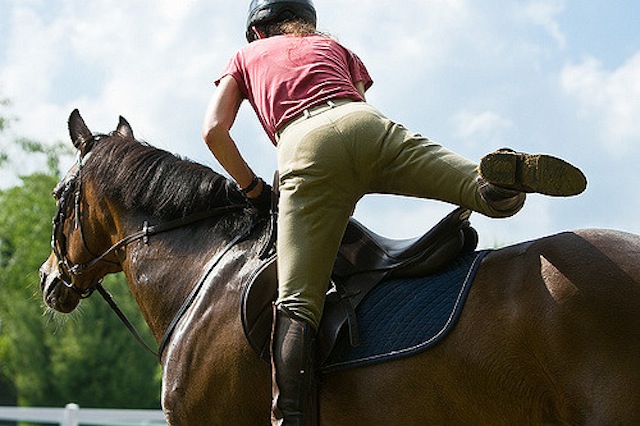Equine law attorney Kjirsten Lee describes the lease agreement as “more of a work of art than a legal document” — and details here some of the many considerations when creating such a document.
Buying a horse, as we all know, is a big investment. It’s not just the upfront costs but the continuing ones: board, farrier, vet, trainer, and so on. Because of these costs, many people look for more cost-effective ways to satisfy their horse craving. Enter the equine lease: an equestrian gains consistent access to a horse and gets to build a relationship with that horse and improve their horsemanship skills, for a reduced rate, before deciding if buying a horse of their own is right for them (if that is the end goal).
Leases can be beneficial for both the lessor (person who owns the horse) and the lessee (person who is leasing the horse). For instance, a college student or busy professional lacking the time to devote to their horse might find a lessee to help keep the horse fit and happy. A different college student or busy professional who doesn’t own a horse might find a horse to lease so they can continue riding during school or their busy career. Leases can be customized to fit every situation, but there are a few things that are necessary in any good lease.
This is my basic checklist:
Basic Terms
- Name of person leasing horse – if a minor, be sure to list parent/guardian as well and have parent/guardian sign
- Description of horse
- Horse location – will the horse be moved from its current location
- Payment – how much, how frequently, what form(s) of payment
- Limitations – can the horse be jumped, taken on trail rides, etc.
- Use – can the lessee take the horse to off-site shows, clinics, etc.; will they be required to take lessons; can they allow other people to ride the horse
- Insurance requirements
- Barn rules – lessee agrees to follow rules of facility where horse is stabled
- Responsibilities – who pays board, farrier, basic vet, extra vet, supplements, registration fees, show fees
- Duration of the lease
- Owner representations of horse’s soundness, suitability, any vices and exceptions
Additional Terms
- Quality of care
- Right to inspect
- Tack/equipment provided with horse
- Lessee to pay owner horse’s market value if horse dies or is lost or stolen
- Liability for injury to horse
- Terminating the Lease
- Return of horse to owner’s possession – when & how
- Any notice requirement
- Resolving pay if lease is terminated in the middle of a pre-paid month
- Cause for termination
Most of the leases I have worked on are drafted to automatically renew every month, unless they are intentionally terminated. This is known in legal circles as a “month to month” lease. A lease may also be designed to last for a set period of time, generally three months, six months, or one year. The trouble with this is that it can make it hard to get a horse out of a bad situation if one arises. Every lease should have a termination clause stating how the lease can be ended and by whom.
If the person leasing the horse is a minor, make sure the parents sign the lease agreement! It can also help to note who is responsible for paying on the lease each month – the lessee, their parents, or a third party. An equine attorney can help you decide how best to draft your agreement to fit your needs and wishes.
For more of Kjirsten’s articles on equine law, click the #EQUINE LAW hashtag at the top of this page, or click here to open a list.
Kjirsten Lee, J.D., is an equine attorney with rb LEGAL, LLC, in Golden Valley, MN. She has written on topics such as the Horse Protection Act and use of drugs in racehorses, as well as general legal issues that horse people may encounter. You can follow her on Twitter at @KMLee_Esq. Kjirsten and her OTTB, Gobain, compete in dressage and eventing.
Disclaimer: Nothing in this article is intended to be legal advice. No attorney-client relationship is created by reading and/or commenting on this post. If you are seeking legal advice, please contact an attorney directly.


